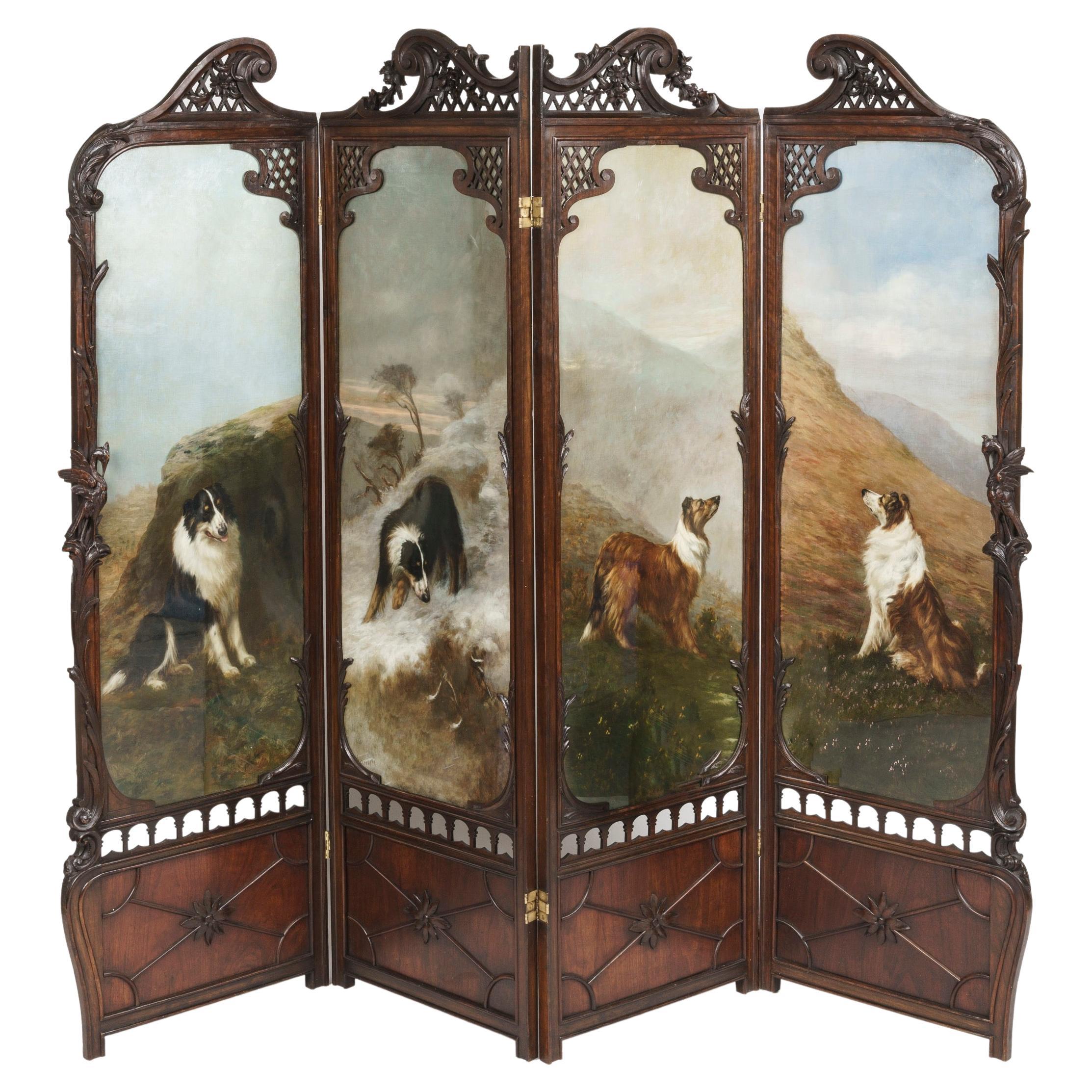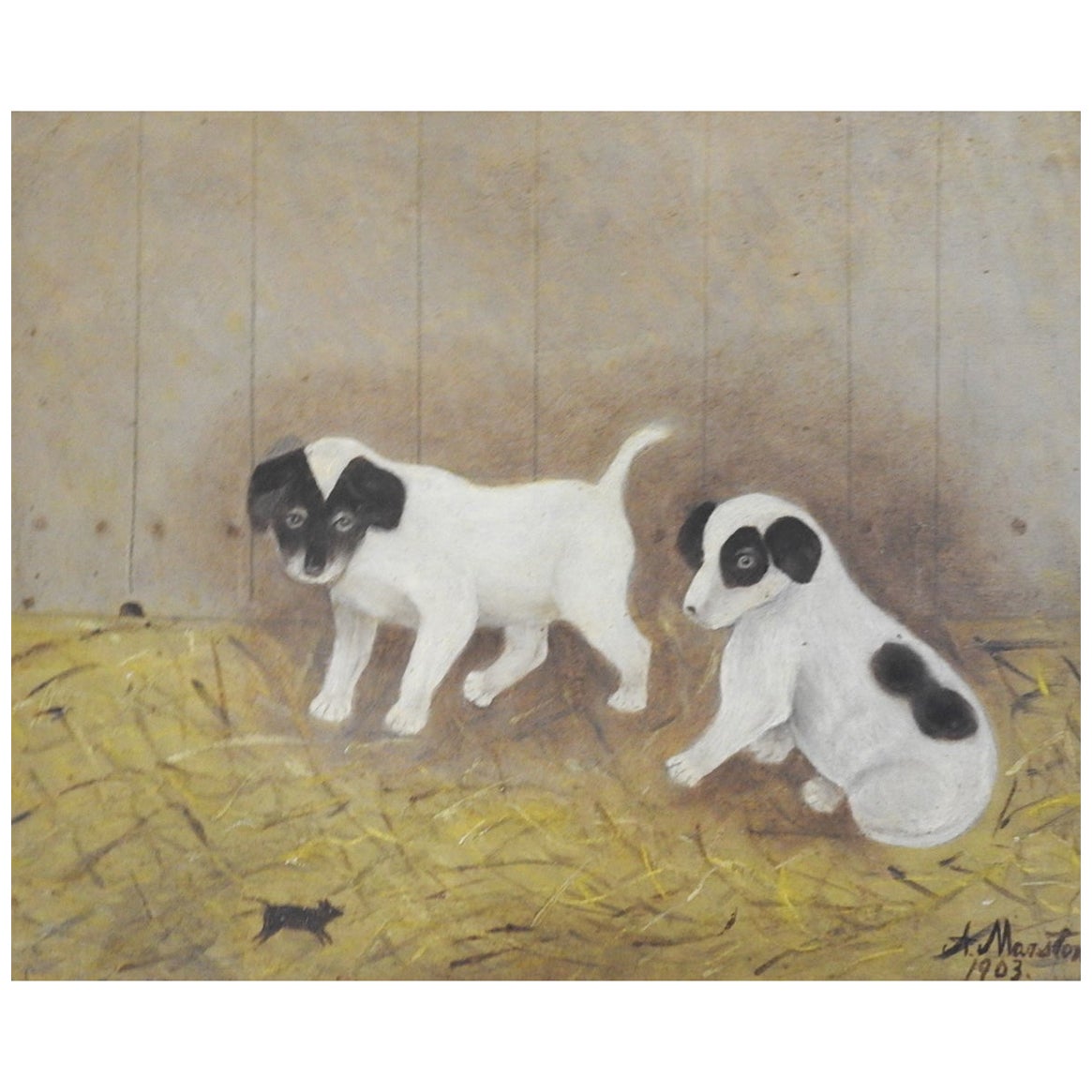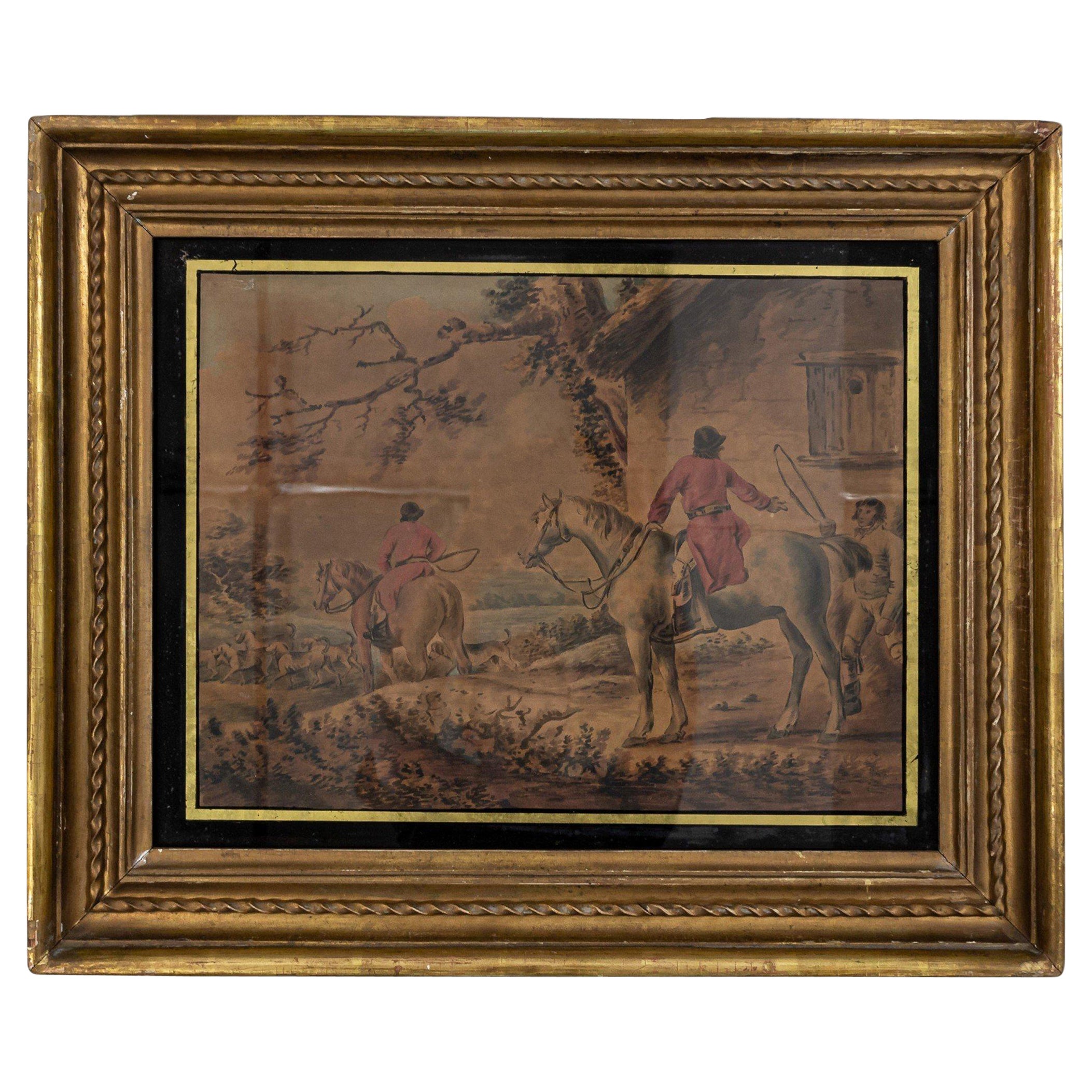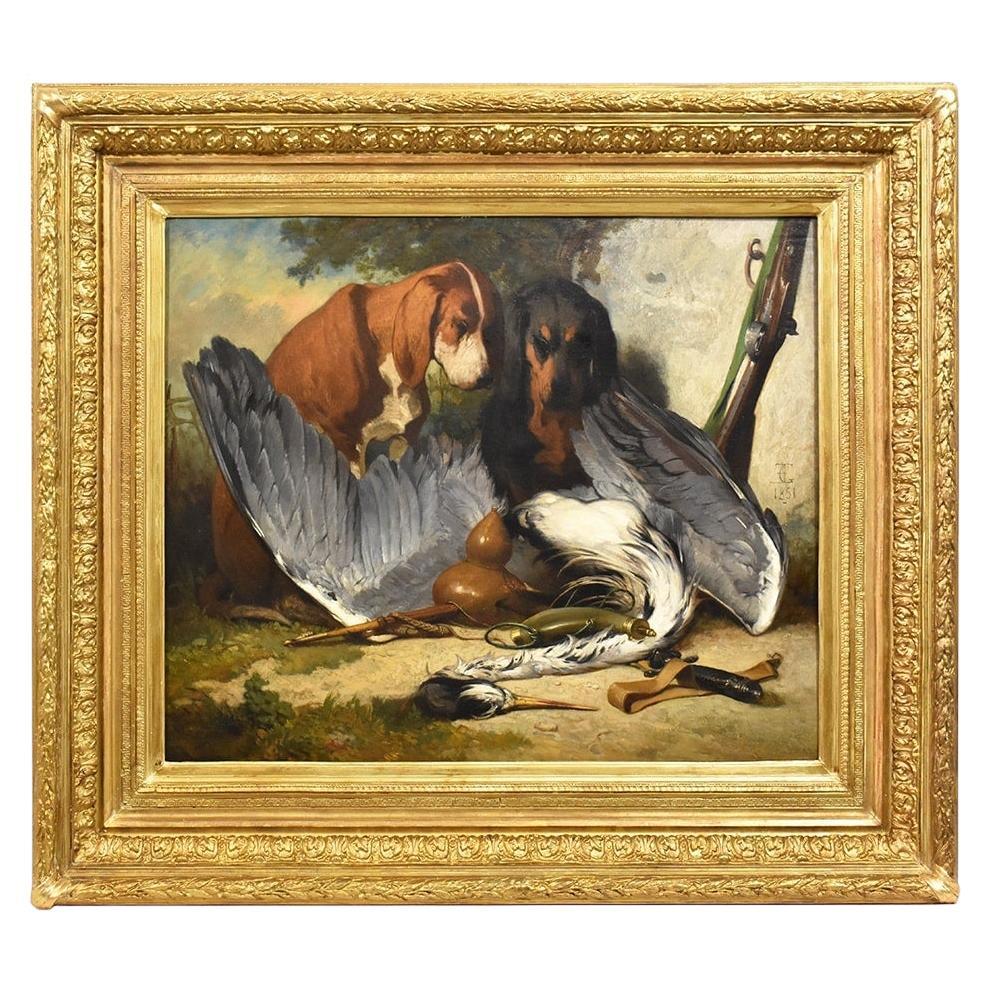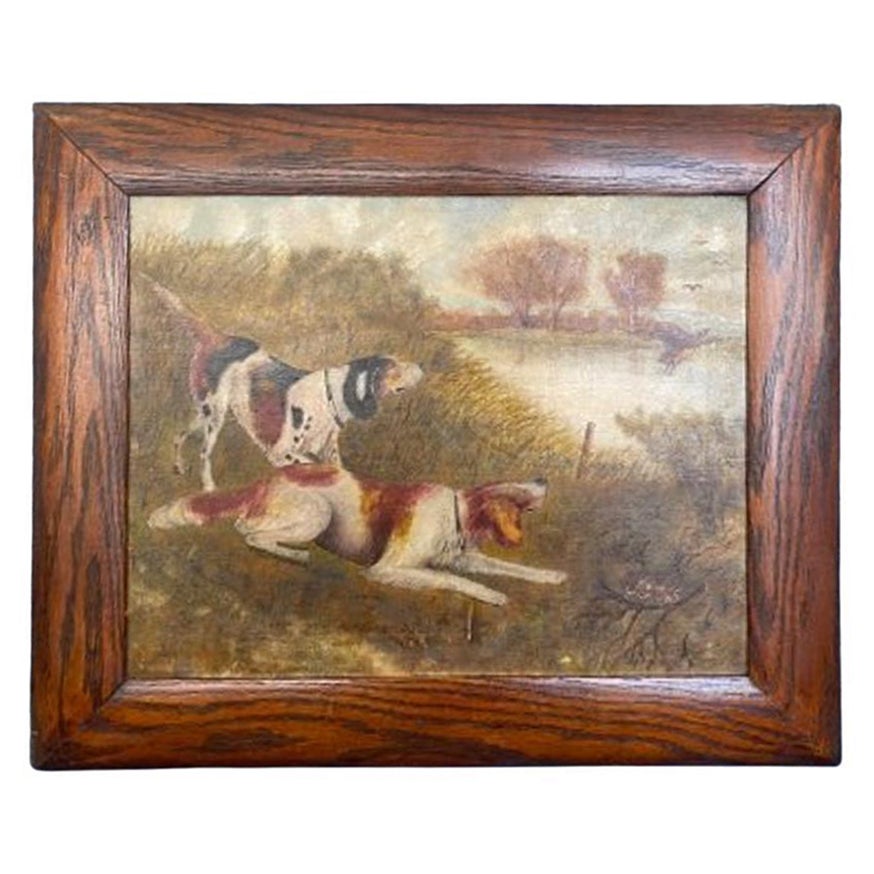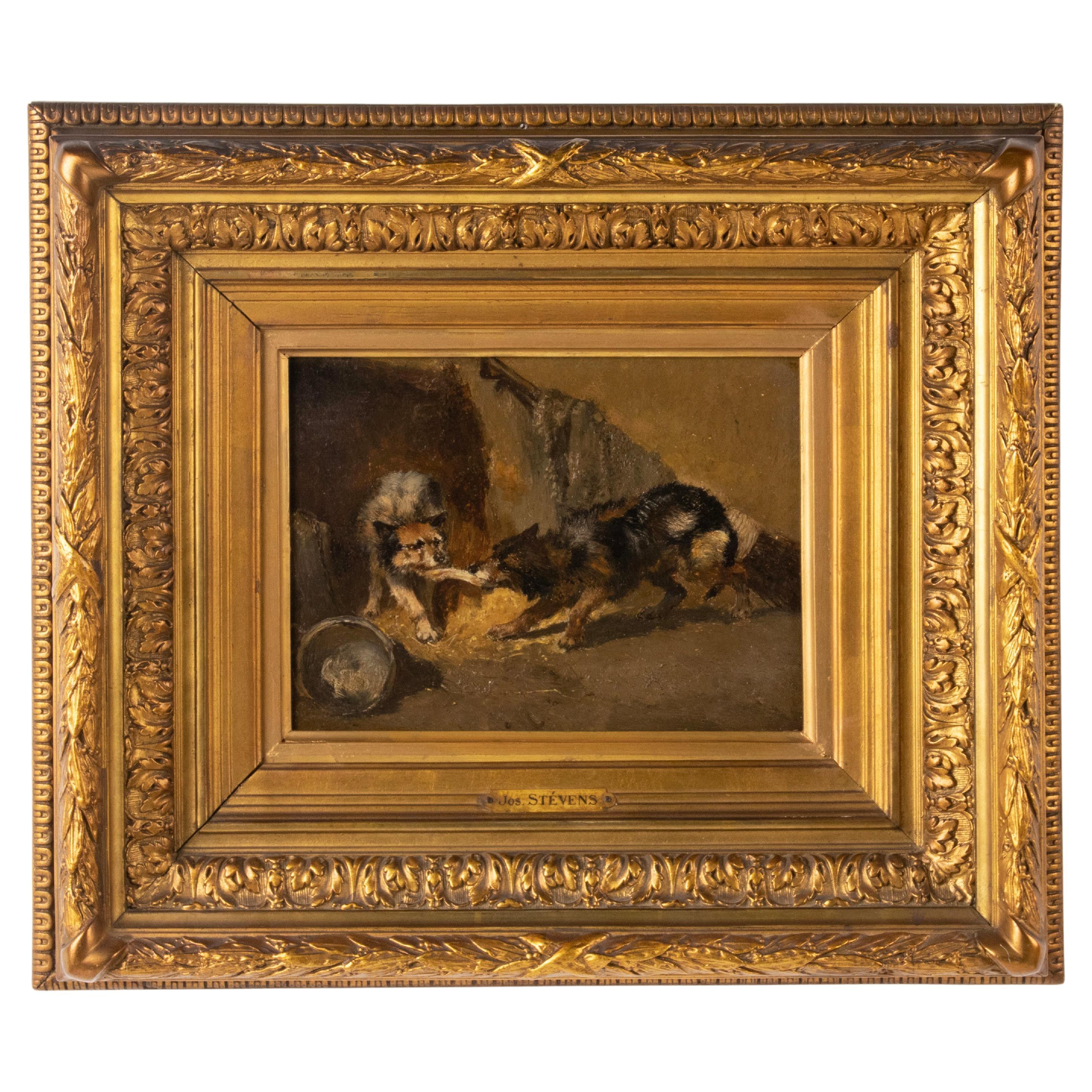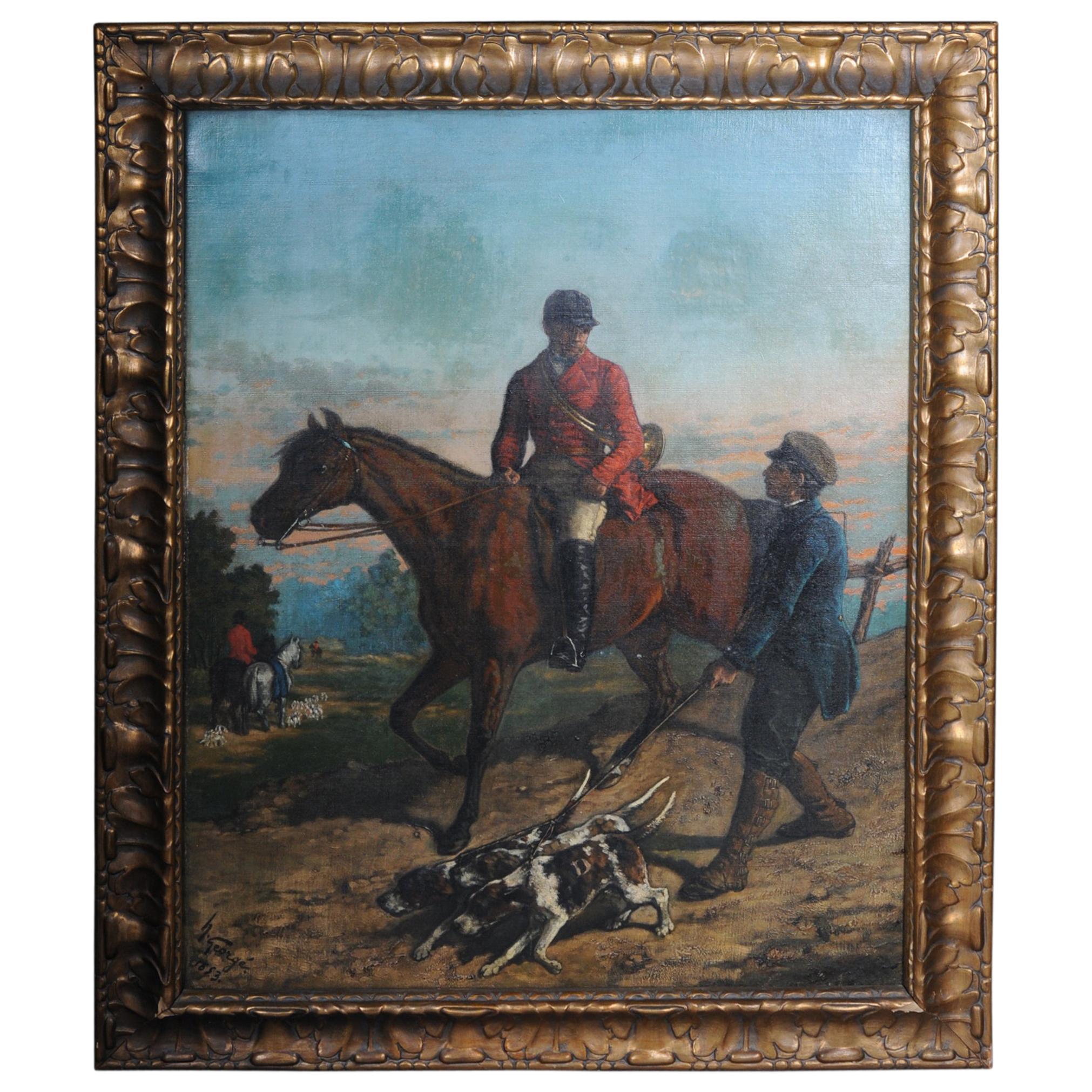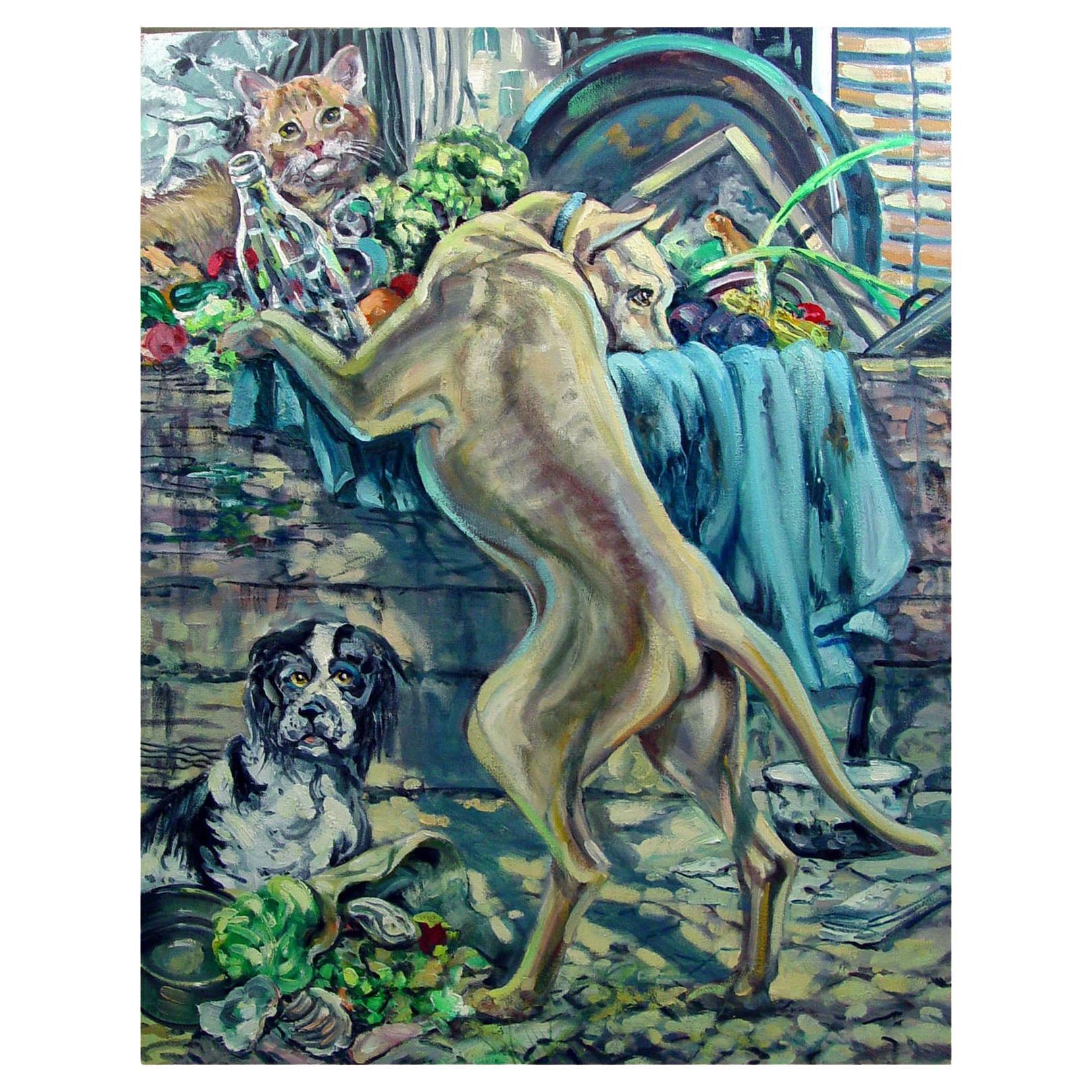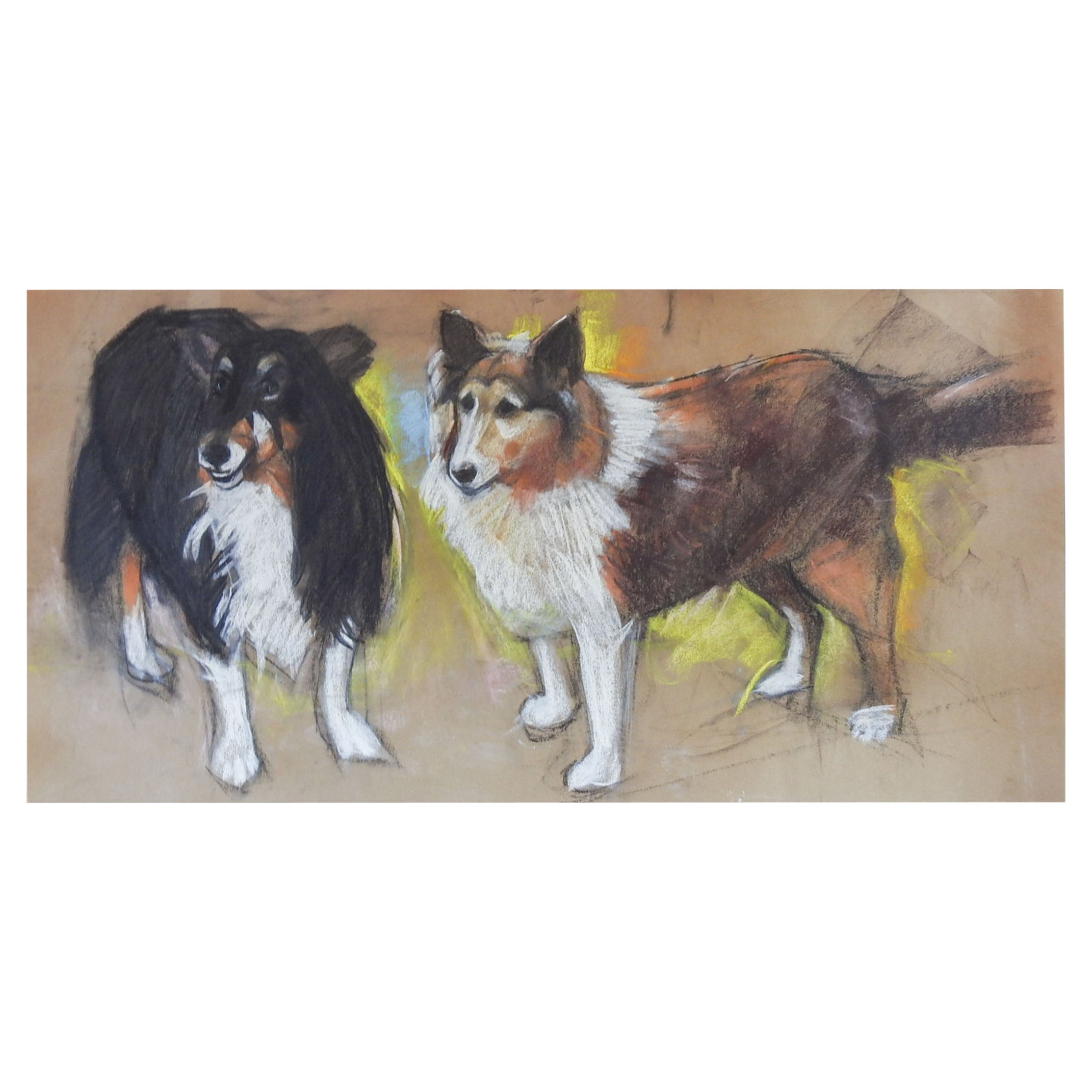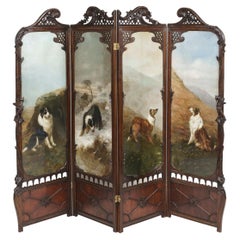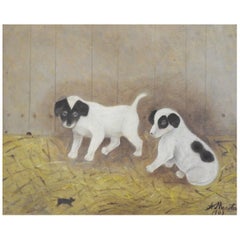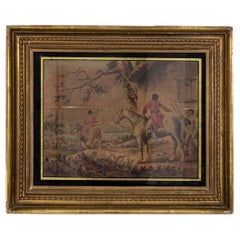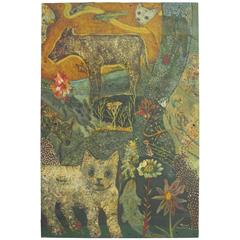
"Wonderland" Painting with Dogs by Terry Turrell
View Similar Items
1 of 7
"Wonderland" Painting with Dogs by Terry Turrell
About the Item
- Creator:Terry Turrell (Artist)
- Dimensions:Height: 30 in (76.2 cm)Width: 20 in (50.8 cm)Depth: 0.75 in (1.91 cm)
- Style:Outsider Art (Of the Period)
- Materials and Techniques:
- Place of Origin:
- Period:
- Date of Manufacture:2015
- Condition:
- Seller Location:New York, NY
- Reference Number:1stDibs: LU89795365353
You May Also Like
- Four Fold Screen with Paintings of DogsBy Maud Earl 2Located in London, GBA Rare four-fold screen The panels by Maud Earl The screen of rounded rectilinear form and constructed from mahogany, with two pierced broken swan-neck pediments atop, with carved f...Category
Early 20th Century European Art Nouveau Paintings and Screens
MaterialsMahogany
- 1903 Folk Art Puppy Dogs and Mouse PaintingLocated in Seguin, TXAntique 1903 oil on artist board folk art painting of a pair of puppies and a mouse. They look like little Jack Russell terriers and are in a barn and the mouse hole is on the left....Category
Antique Early 1900s American Folk Art Paintings
MaterialsPaint
- Vintage Watercolor Painting of Hunters on Horses with DogsLocated in New York, NYEnglish Victorian watercolor painting of two hunters on horses accompanied by dogs under glass in a gold and black rectangular frame.Category
Antique Late 19th Century British Victorian Paintings
MaterialsGlass, Paint
- Dogs Portrait Painting, Two Hunting Dogs, Oil Painting On Wood, 19th Century.Located in Breganze, VIThis is a portrait artwork of Two Hunting Dogs. Portraits of Dogs proposes an oil painting on wood with two Hounds and a Bird, from the 19th century. This...Category
Antique Mid-19th Century French Louis Philippe Paintings
MaterialsWood
- Late 19th Century Wood Framed Folk Art Painting Depicting Hound Dogs by RiverLocated in Middleburg, VALate 19th Century Wood Framed Folk Art Painting Depicting Hound Dogs by River. The two dogs are hunting water fowl. Wood framing is modern. United States, 1...Category
Antique Late 19th Century American Folk Art Paintings
MaterialsCanvas, Paint
- Mid 19th Century Oil Painting Dogs by Joseph StevensBy Joseph StevensLocated in Casteren, Noord-BrabantAn oil painting of two rustic dogs fighting over a piece of food. It is painted on an oak panel. Signed top left. The signature is a bit faded, it's a monogram J.S. by Joseph Stevens. He often signed with a monogram. In a gilded frame frame with gesso moldings. Dimensions frame: 41 x 47 cm Dimensions painting: 17 x 23 cm. Joseph Stevens is the older brother of the very well-known artist Alfred Stevens. In the book 'The Belgian Art Book' by J. de Geest, it is written that Joseph Stevens has given a new dimension to painting animals. Joseph Stevens is an early representative of realism and social art. While Eugene Verboeckhoven has royal dogs pose on a beautifully embroidered cushion, Joseph Stevens already has an eye for the dark side of animal existence: exploitation by man, who in turn is a victim of society. His first successful painting, Brussels in the morning, shows how miserable dogs and poor people suffer the same fate. In the Sandman, Stevens shows a joint effort of man and dog, in which the viewer cannot ignore the social conditions: exhausting labor at dawn in some suburb. The gray sky and monochromy of the suburb add to the sinister atmosphere. Joseph Stevens was one of the first artists to take the urban proletariat as his subject. Stevens enjoys a very high reputation in his Parisian years. His brother Alfred writes: 'I am of this time, but you, Joseph, you are of the race, and thus you are of all times.' French critics agree. Stevens' works are a source of inspiration for the literature of the time. For example, Beaudelaire writes a poem about Stevens' dogs. Joseph Edouard STEVENS. Belgium, 1819-1892 Stevens was a painter, etcher and engraver. Brother of the gifted painter Afred Stevens. Education at the Academy in Brussels (1834-1835). Debuted at the Salon in Brussels in 1842. Continued his career in Paris in 1852. He was primarily the painter of canvases depicting domestic animals (dogs, monkeys, horses), sometimes in curious, even idiosyncratic situations, and far from romanticism. This realism, of which he was one of the pioneers, earned him the interest of critics and intellectuals. His approach was defined by this contemporary realism that eschewed idealized depictions of animals as heroic emblems of nobility. Rather, Stevens emphasized the ordinary animals of everyday life, with a particular focus on working dogs, stray dogs and all of the mutts that wandered the streets of Brussels. Museums and public collections, including' Royal Museum of Fine Arts Brussels, Ghent, Hamburg, Paris, Musée du Louvre, Rouen, Musee des Beaux-Arts. Stuttgart, State Gallery. King Leopold...Category
Antique 1850s Belgian Beaux Arts Paintings
MaterialsGesso, Oak, Pine, Paint
